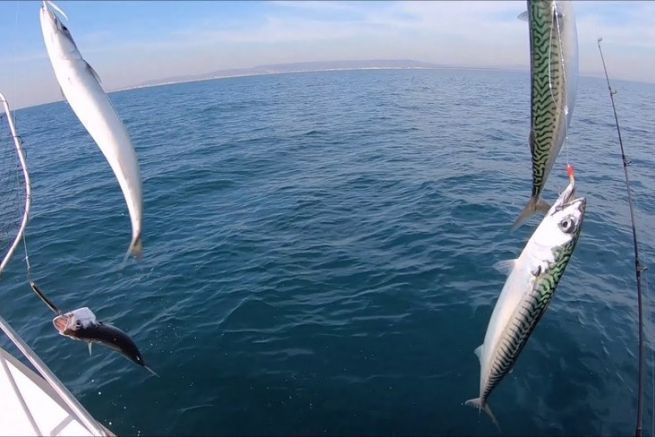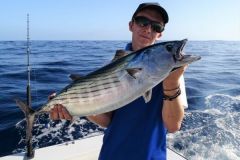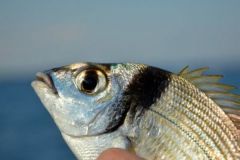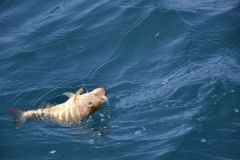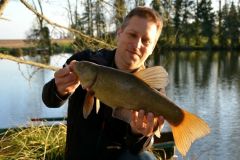Description and morphology of mackerel
Its geographic distribution is almost total, covering the entire periphery of France. It is positioned in the middle of the food pyramid and can be a formidable predator of small fish, but can also be consumed by large carnivores. Its green color, mottled with black and blue-green above the lateral line, as well as small scales, make it a distinctive species.
The reflections on its flanks make it much more discreet in open water when hunting, but also protect it from predators. On its back, it has two distinct dorsal fins that play an important role in its swimming balance. Its eyes are large, a sign that this species lives in open water and makes extensive use of this sense to feed and find its way around.
Its overall appearance is quite hydrodynamic, with hard rays at the base of its fins which, coupled with adequate musculature, provide good propulsion. It is a tireless swimmer, capable of surprisingly high speeds, and moves in shoals to meet feeder currents. A closely related species is the Spanish mackerel, often found in the Mediterranean and Atlantic, with a fuller coloration on its flanks.
Power supply
At birth, mackerel, like all other fish, are eager to eat micro zooplankton. They soon turn their attention to crustaceans, pelagics and fish, which they consume in large quantities.
Moving and feeding in shoals, they need to find a large quantity of prey in relatively small areas. They feed mainly in the main currents, especially sprats, which in winter are the mackerel's staple diet.
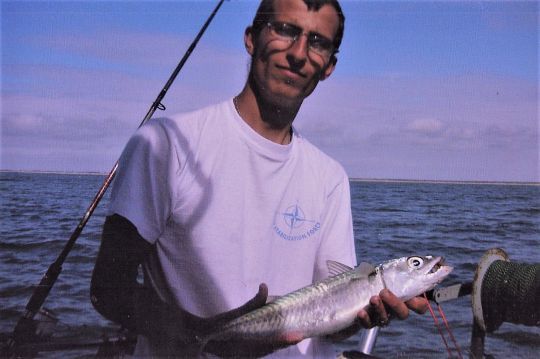
Late reproduction
Mackerel like spring temperatures to reproduce. This species is rather late in life, starting to reproduce from the age of 3. It is at this age that mackerel move closer to the coast to carry out their spawning cycle.
The schools in the south spawn in March, releasing their eggs and milt into the water, while the mackerel in the north spawn later, in June-July. The spawning ballet is magnificent, with hundreds of mackerel twirling between two waters at breakneck speed. Tuna and dolphin clearly take advantage of this to feed.
Size and record
Mackerel don't grow exceptionally well, because at 6 years of age, they don't weigh more than 500 grams. On the other hand, it is a species that, for its size, has a surprising longevity. It's possible for it to exceed 15 years and 1.5 kg.
The legal catch size is 20 cm in the North Sea, Channel and Atlantic, and 18 cm in the Mediterranean, so that this species can reproduce at least once before being caught.
Fishing season and location
Present all along the French border, mackerel live in bays and gulfs from spring onwards. They seek their food in slightly calmer areas. In the open sea, they can be found on shallow shelves or at depths of up to 200 m during the day. It is often in these areas that the most beautiful specimens can be found.
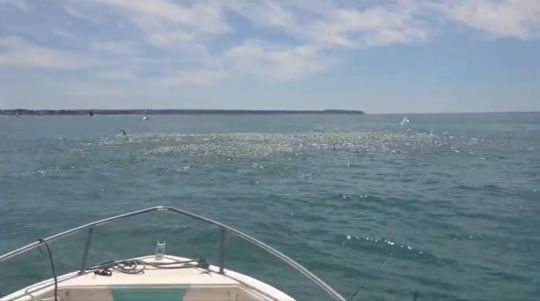
A simple fishing method
Fishing for mackerel is quite simple, as their food is quite varied and, given the competition for food in a school of this species, these fish don't take the time to think before pouncing on the bait.
A train of white feathers, finished off with a big wave, is ideal for reeling in mackerel without too much difficulty. If you find a mackerel hunt consisting of several hundred individuals, it's a guaranteed jackpot, and the bass are often to be found below. The opportunity to witness a magnificent spectacle. You'll often spot the hunts thanks to the seagulls that come to mingle and feed.
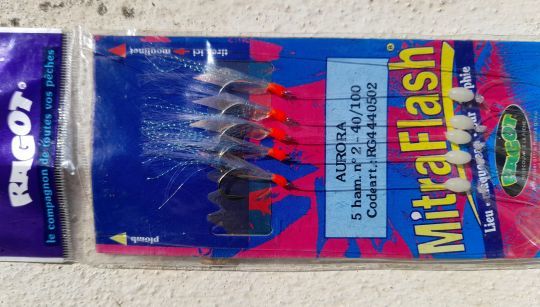
Basic equipment
It's best to use a strong rod without going overboard. A 2-meter rod weighing 50 to 100 grams and fitted with a Shimano 6000-type reel is ideal. Nylon of 30 to 35 hundredths or braid of 17 to 20 hundredths is a good compromise. A commercially available feathered leader with stem is often the best way to have a good time with this species.

